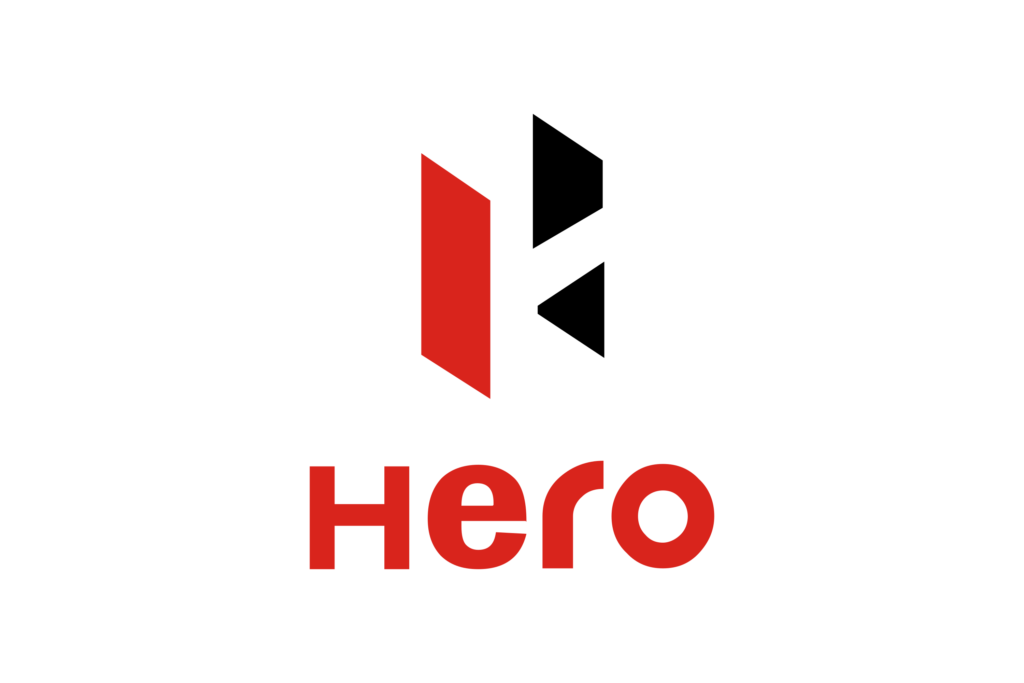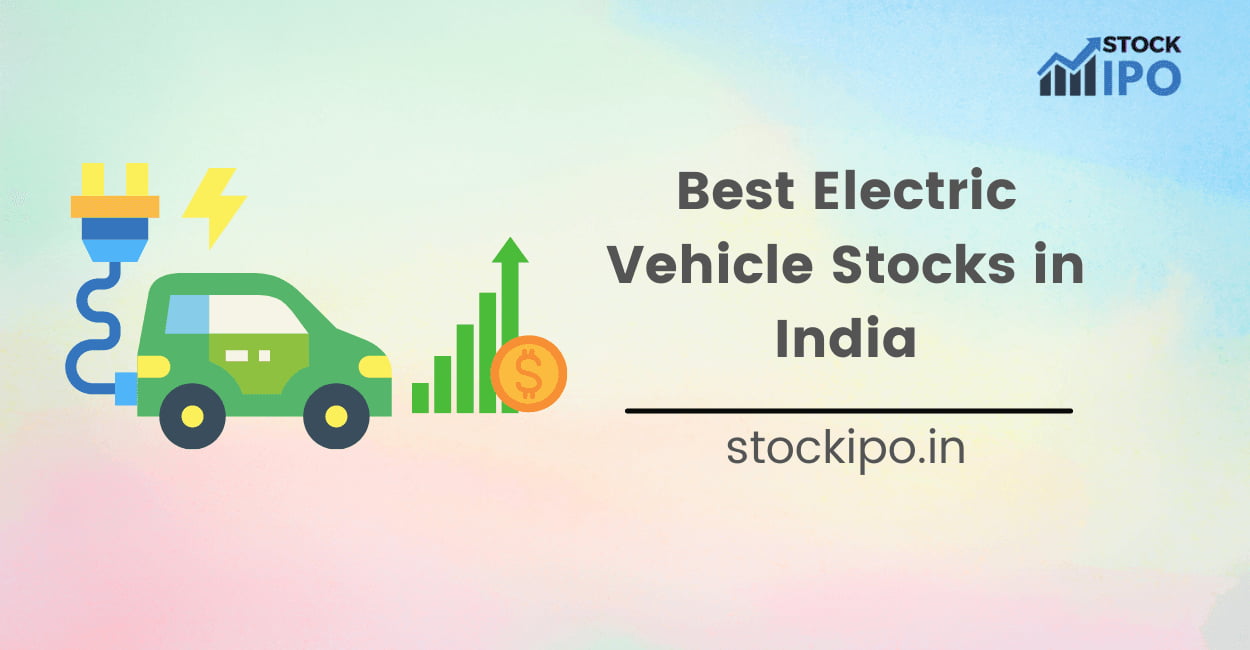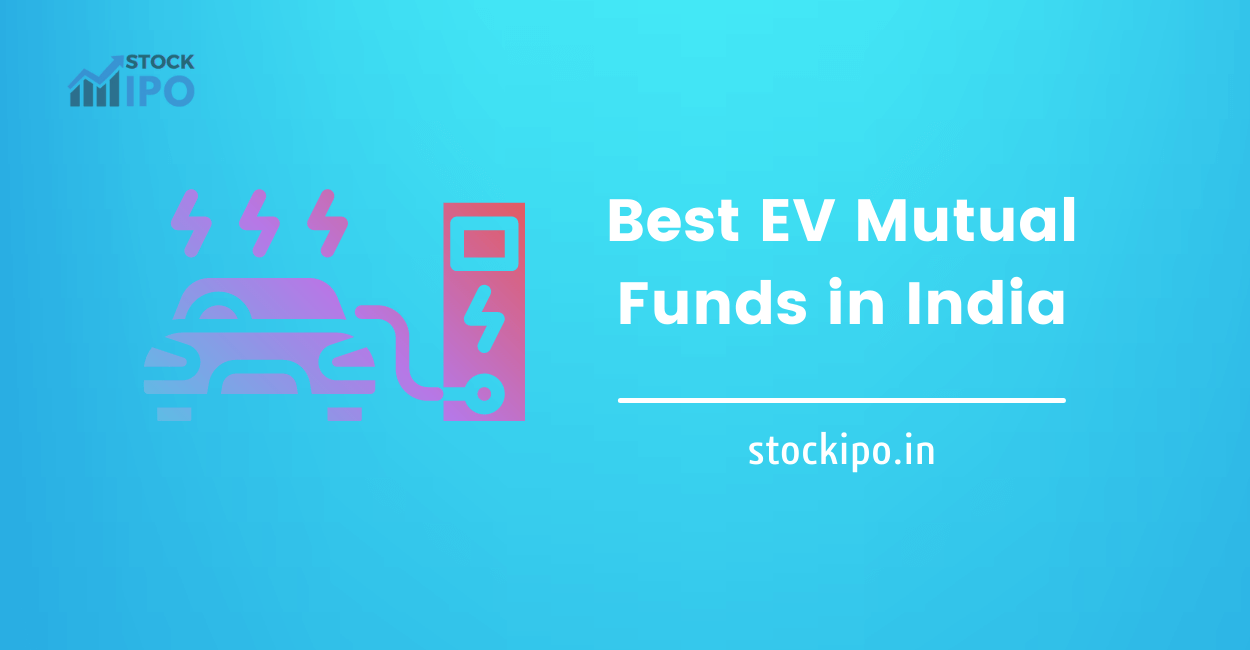A higher level of living is a result of Indians’ increased per capita income. Some luxuries are no longer seen to be a luxury by the majority of people due to increased expenditure on them. This is another effect of the readily available loans and money nowadays. Automobile expenses are one such expense. In terms of revenue, the automobile industry ranks among India’s top industries. The industry has demonstrated its potential in recent years, and now that electric vehicles are becoming more and more necessary, there are even greater opportunities for growth.
Therefore, if you intend to invest in automobile stocks, we will supply you with not only a list of the top 10 auto stocks in India but also an analysis and evaluation of those stocks.
10 Best Automobile Stocks in India
- TATA Motors
- Maruti Suzuki
- Hero MotoCorp
- Mahindra & Mahindra
- Bajaj Auto
- TVS Motors
- Eicher Motors
- Force Motors
- Sona BLW Precision Forgings
- Bosch Ltd.
How To Analyse An Automobile Stock?
The automotive industry creates durable items like vehicles and trucks. Consequently, the industry is one of the consumer durables. Due to the fact that they don’t sell to the same customer as frequently, it is crucial to research how the industry responds during various stages of economic cycles.
These are the main pointers to consider when looking for a good automobile stock for your portfolio –
- Revenue and Profit
The industry is one of the most lucrative in the nation, as was already said. Therefore, the company’s individual sales and earnings have a big impact on the stock’s credibility and future potential.
- Sales Volumes
The number of vehicles the company sells is practically directly tied to the revenue. However, looking at this statistic offers us a more precise indication of how much the company is actually selling and a better performance tracker.
- Liquidity
A corporation with large fixed costs must pay close attention to its liquidity. The best illustration of this is Fiat, which made the decision to use its strong liquidity during the 2008–2009 recession to invest in better models and research & development. The best indicator of a company’s liquidity is its current ratio. A current ratio of less than 1 indicates that the company does not have the ideal liquidity and will not be able to pay its dues if they arise now.
- Valuations
A company’s valuation can be assessed using its Price-to-Book ratio, or P/B Ratio, which contrasts the company’s book value with market value. The Return on Equity Ratio, in addition to the P/B ratio, is a reliable predictor of the company’s health.
- Profitability
The main objective of any business is to maximise profitability, and this is also true of the automotive industry. However, this figure specifically for the automotive industry offers us a sense of how sensitive the corporation is to changing market trends. Asset-Turnover Ratio is the best indicator of the same.
Analysis Of The Stocks
On the basis of the above-identified parameters, the following are the stocks that you can consider as an addition to your portfolio this year –
1. TATA Motors

| TATA Motors | March 2022(Rs. Crores) | Growth |
|---|---|---|
| Net Sales | 2,78,453 | 11.24% |
| Profits | -11,309 | 13.69% |
| Current Ratio | 0.58 | |
| P/B Ratio | 8.33 |
A long-term investor’s portfolio could include any TATA company as a main holding. When looking at this company’s sales and profitability, the picture is less than ideal, and the figures most certainly do not entice any short-term investments. Since the 2020 year-end, the company’s financials have been in the red, which is showing negative numbers. The company’s revenue growth hasn’t been particularly exciting either, with increases of -13% and -4% for the years 2020 and 2021, respectively. The growth rate for 2022 was 11%, which represents a remarkable turnaround from the previous year’s negative results.
With 2,28,169 units sold during the third quarter of 2022, the company’s sales volumes increased by 14%, which is encouraging. The P/B ratio and asset turnover ratio are 8.33 and 0.73, respectively. Although it’s ideal to have an asset turnover ratio below 1, the company’s P/B Ratio is a touch high. However, given how well the business is performing in the electric vehicle market, this can be made up for.
2. Maruti Suzuki

| Maruti Suzuki | March 2022(Rs. Crores) | Growth |
|---|---|---|
| Revenue | 88,329 | 25.52% |
| Profits | 3,717 | -13.53% |
| Current Ratio | 0.99 | |
| P/B Ratio | 4.22 |
Maruti Suzuki now controls more than half of the market. Almost all middle-class families have owned at least one vehicle from this manufacturer. The company’s revenues are optimistic, growing by nearly 25% from the end of the prior year. The company’s profit and loss statement showed a negative sales increase of 12% and 7% in the years before that, though. Prior to last year, when they decreased by 13%, profits had been on the rise.
The asset-turnover ratio for the company is 1.23, which is higher than optimum and, so, again favorable. Additionally, the current ratio is almost desirable, nearing the ideal value of 1. The P/B ratio of 4.22 falls within the range for this industry, thus the company also meets this requirement. The business is currently in a strong position and has the potential for additional growth.
Given that the business controls the plurality of the market, it is apparent that the sales volume is enormous. WagonR models were sold by the business in 2022, totaling 2,17,000 units. Swift and Baleno then released 186000 and 176000 models, respectively. The company’s sales volume increased by 18%.
3. Hero MotoCorp

| Hero MotoCorp | March 2022(Rs. Crores) | Growth |
|---|---|---|
| Revenue | 29,551 | -4.55% |
| Profits | 2,528 | -15.22% |
| Current Ratio | 1.99 | |
| P/B Ratio | 2.91 |
Hero MotoCorp, which was earlier a Joint Venture with the Japanese company Honda was established in 1984 and used to manufacture cycles. The business is also India’s first manufacturer of motorcycles. The firm is one of India’s leading producers of two-wheelers. In the year ending in 2022, the company’s revenues had a 4.5% negative development. However, prior to this, the business had a solid track record of consistently providing profits while ignoring the COVID-19 element. Similar to how revenue has decreased, profits have done so as well, despite having previously had a respectable track record. The company’s asset turnover ratio is 1.33, which shows high asset utilization.
When comparing December 2021 to December 2022, the manufacturer’s sales volumes decreased by 0.15%. The units sold up to November 2022 were 3.9 lakhs, and in December 2022, this number increased to 3.94 lakhs. Although the other numbers paint a good picture the sales decline and slower growth may be an early warning sign, so a long-term investment may be successful.
4. Mahindra & Mahindra

| M&M | March 2022(Rs. Crores) | Growth |
|---|---|---|
| Revenue | 90,171 | 21.40% |
| Profits | 5,397 | 122.50% |
| Current Ratio | 1.38 | |
| P/B Ratio | 2.47 |
This automaker, which makes tractors, earthmovers, PVs, 3-wheelers, tractors, and CVs, is the most diverse in India. With the help of its group firms and subsidiaries, the corporation also maintains a strong presence in other market segments. The business has consistently produced excellent quarterly performance; the quarter ending in September 2022 saw growth of 39.13%. The revenue growth is unfortunately not very impressive, but there are some reasonable numbers, with a decline, only to rise in March 2022 year finishing with 21% growth. Since March 2020, the company’s profitability has increased after falling throughout the COVID-19 era.
The company’s asset turnover ratio is 0.91, which is a little below the optimal value but may be discounted given that the company sold its highest-ever number of vehicles in a single month in October 2022 and has continued to post strong numbers for the same. The company’s P/B ratio is likewise in line with industry standards, so a favorable valuation is suggested.
5. Bajaj Auto

| Bajaj Auto | March 2022(Rs. Crores) | Growth |
|---|---|---|
| Revenue | 33,145 | 19.48% |
| Profits | 5,586 | 22.76% |
| Current Ratio | 2.13 | |
| P/B Ratio | 3.96 |
Bajaj is not only a renowned name in India but globally. The company enjoys a significant presence in as many as 79 countries. They produce both two and three-wheeled vehicles. The company, however, was infamous for seeing a reduction in its YoY growth of sales volume, with 3.62 lakh units sold in December 2021 and 2.81 lakh units sold in December 2022, a decline of 22%. Up to March 2022, the company’s revenues expanded by 19%, while its profits grew by 22%.
A respectable position in the productivity category is shown by the asset-turnover ratio of 1.04. The company’s current ratio, however, indicates that it has too much liquidity, which means it is investing less in other crucial areas. On the higher side, 2 is the maximum figure permissible.
6. TVS Motors

| TVS Motors | March 2022(Rs. Crores) | Growth |
|---|---|---|
| Revenue | 22,355 | 25.41% |
| Profits | 728 | 18.37% |
| Current Ratio | 0.69 | |
| P/B Ratio | 6.16 |
In addition to producing 2- and 3-wheelers, TVS also produces its parts and accessories. This manufacturer’s revenues have grown extraordinarily well year over year during the most recent quarters. But like other businesses in the industry, the company’s growth dropped in March 2020 before improving in March 2021 and finishing in March 2022 with a 25% rise. The company’s asset turnover ratio is 1.89, which is nearly identical to the industry average and indicates a healthy level of asset utilization. The current ratio, on the other hand, paints a less-than-ideal image, with a value of 0.69, below the ideal value of 1, indicating a rather shaky foundation of liquidity for the organisation.
When compared to other businesses in the same industry with comparable track records, the P/B ratio for the company is, however, a touch too high. Although the company saw a 10% increase in domestic 2-wheeler sales in December 2022 over December 2021, this was offset by other factors. The company’s electric 2-wheeler TVS iQube Electric has demonstrated good growth on its own over the past year and is anticipated to continue growing in the years to come.
7. Eicher Motors

| Eicher Motors | March 2022(Rs. Crores) | Growth |
|---|---|---|
| Revenue | 10,298 | 18.09% |
| Profits | 1616 | 22.88% |
| Current Ratio | 1.91 | |
| P/B Ratio | 6.23 |
The Eicher Group’s listed company in India, which was created in 1982, is Eicher Motors Limited. It is a significant player in the Indian automotive industry and the leading producer of middleweight bikes worldwide. A joint venture between Eicher and Sweden’s AB Volvo is called Volvo Eicher Commercial Vehicles Limited (VECV). In addition to operating buses and trucks and selling auto parts, VECV also offers technical consultancy services.
The company ended March 2022 with 18% growth, after it had to face a drop in its revenue for the year March 2021. The business has a decent track record of profitability, and in the year ending in March 2022, it earned Rs. 1616 crores, an increase of 22.8%. The company’s sales volumes increased by 86% between October 2021 and October 2022, one of the largest percentage increases among its competitors. Asset turnover for the company is 0.75, which is once more below the ideal value of 1 and indicates less effective asset usage. When compared to its competitors, the P/B ratio is also high. For a window of 1-2 years, investing in the company may be an excellent idea.
8. Force Motors

| Force Motors | March 2022(Rs. Crores) | Growth |
|---|---|---|
| Revenue | 3,240 | 63% |
| Profits | -74 | 33.33% |
| Current Ratio | 0.8 | |
| P/B Ratio | 0.76 |
The firm produces compact and light commercial vehicles (CVs), multi-utility vehicles (MUVs), and agricultural tractors, which it exports to a number of nations in the Middle East, Asia, Latin America, and Africa.
The company’s revenue growth over the previous five years was only 1%; but, growth over the previous year was 63%. Any investor who has stock in the company should be concerned about its low return on equity, which was -1.3% and has been low for the past 2 years. Additionally, the corporation has reported losses for the previous two years, but these losses started to diminish in 2019, indicating that COVID-19 is most definitely not the cause of the decline. However, the business is expected to release positive quarterly earnings and may have a strong start to FY23–24. The asset turnover ratio of 0.93 and the current ratio of 0.8, both of which are near the most efficient values, support this conclusion by showing a solid foundation for any significant fallout. The stock’s P/B ratio is only 0.76, which indicates that if the business does well, it will end up providing the best returns among its competitors.
9. Sona BLW Precision Forgings

| Sona BLW | March 2022(Rs. Crores) | Growth |
|---|---|---|
| Revenue | 1913 | 38.50% |
| Profits | 353 | 88% |
| Current Ratio | 2.46 | |
| P/B Ratio | 20.11 |
The company specialises in creating, manufacturing, and distributing engineering automotive parts and systems for all sorts of cars, including gears, differential assemblies, conventional and micro-hybrid motors, BSG systems, and EV traction motors. The company’s current ratio is fairly high at 2.49, indicating excessive liquidity, and there are fewer investments in the company’s productive areas, which can aid in growth. The company does, however, have a respectable asset-turnover ratio of 0.91. The company also has a very high P/B ratio of 20, which seems unjustifiably high even though the company’s strong revenue and profit growth. Because of its investments in EVs, the business might have good growth potential in the future as well. Currently, it is best if an investor observes the stock and reconsiders decisions.
10. Bosch Ltd

| Bosch | March 2022(Rs. Crores) | Growth |
|---|---|---|
| Revenue | 11,782 | 21.26% |
| Profits | 1217 | 153.15% |
| Current Ratio | 1.94 | |
| P/B Ratio | 3.99 |
Bosch Ltd. is active in the fields of building technology, energy technology, consumer products technology, industrial technology, and automotive technology. Among the products, it makes and sells are diesel and gasoline fuel injection systems, automotive aftermarket goods, industrial machinery, electrical power tools, security systems, as well as industrial and consumer energy products and solutions. The company made a comeback with a 153% increase in profits for the year ending in March 2022 after reporting a 17.8% decline in profits for the year ending in March 2021.
The company’s asset turnover ratio is 0.78, which is below the required standards but still acceptable because it is average. Similar to the previous example, the company’s current ratio, which is close to 2, is also a little high for the industry but is acceptable considering the company’s present profits and investments in the EV segment. Given that the company’s P/B ratio is low and points to strong future growth potential, it can provide significant returns on long-term investments.
Conclusion
Due to the COVID-19 epidemic, the majority of the enterprises in this sector did not have a great time between March 2020 and March 2021. The sector has taken longer than others to recover from the period since purchasing a vehicle is often a significant expenditure. However, the company’s capacity to join the market first and seize the opportunity as the wave and need for electric vehicles grow over the next five to ten years will make a significant difference.
The speed with which a business in this industry has rebounded from the pandemic’s decline can give it an advantage over rivals. Even if the majority of businesses have now recovered, it is possible to determine a company’s potential by analysing its historical data to see which businesses recovered the fastest.







